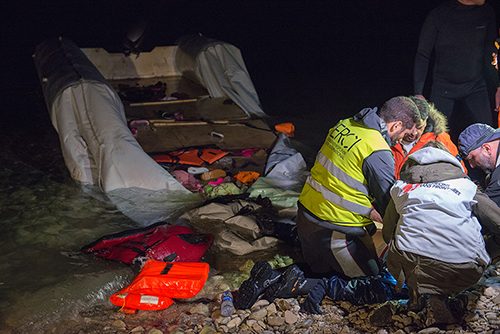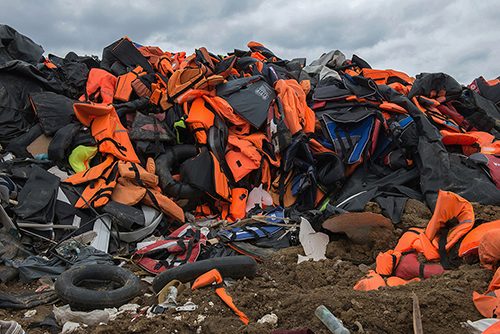I am quite a literal person so when I think of a fault line, the geological reference comes to mind: an unstable place capable of unleashing great violence. Being close to or on the wrong side of the fault line could spell disaster for anything that succumbs to the forces simmering below.
It is not hard to see a political border as such a place. Ever-shifting, established and secured with violence, borders are a constant source of tension or outright conflict. For those fortunate enough to live in lands where fault lines are dormant, such as many (but certainly not all) Canadians, borders seem just fine. But for many millions of people around the globe, they are a source of frustration and terror.
As a photographer, I have been fortunate to witness their impact. Perhaps most shocking was the border between Israel and Gaza which I crossed in 2002 during the second Intifada. Within the space of 30 minutes, I went from the comfort of a smooth highway and an air-conditioned shopping mall to a dust-blown land of shattered buildings and traumatized civilians. An hour later, I was in the Gazan town of Rafah, listening to machine-gun fire and explosions, and watching Israeli bulldozers raze Palestinian homes.
A similar fault line is crossed in a four-hour airplane ride from Montréal to Port-au-Prince, the capital of Haiti. While Montréal has its problems, nothing can prepare one for the levels of deprivation one encounters in the overcrowded slums of Haiti’s major cities. Even a cursory reading of Haitian history – of particular interest to Canadians given our involvement in its travails since 2004 – reveals the extent to which Haiti’s borders have been used to trap these victims of history in a cycle of poverty and exploitation.
Here at home, I have had the privilege of documenting the stories of some of those who risked everything to cross a border that threatened to lock them into a life of fear and hopelessness. Many of them live now with hope of a better life. Others, ensnared in problematic Canadian immigration and security laws, have seen their hopes dashed, their freedom shackled by the fear of being deported back to the hell they sought to escape.
For many of those who’ve escaped it all, such as those sitting before me each day in my second-language classroom, the trauma continues: students panic as they get messages from family members still living in war zones, others break down in tears, still traumatized 20 years after seeing family members murdered, and so many others carry the burden of sadness of being torn from their homeland.
My last example, the current mass migration into Europe, the subject of this brief photo essay, is another example of the dysfunctional border system in our world. On the Greek island of Lesbos, I watched small rubber boats arrive ashore with as many as 60 people stuffed aboard. Two men died en route, others were suffering from hypothermia. Men, women, elderly or handicapped persons, children, babies – as much as $1,500 per person had been paid to human smugglers to reach Europe.
When I arrived in Greece in March 2016, Hungary, Slovenia, Serbia and Macedonia had closed their borders to migrants. The overland route to northern Europe was closed and thousands of refugees were stuck in Greece, the largest single group (14,000 people) amassed at the Macedonian border near Idomeni where the cold and the rain made life intolerable. Children, half of the 14,000 inhabitants of the camp, were getting sick and doctors were seeing “trench foot,” a painful skin disease common to soldiers in the trenches of World War I.
On March 20, an agreement between the EU and Turkey took effect, according to which refugees who arrived illegally in Europe risked deportation back to Turkey. Critics warned that migrants would be stuck in limbo in financially struggling Greece, which did in fact happen. Migrants have been living on the streets of Greek cities or stuck in cold, wet tents somewhere in the country, eating dry submarine sandwiches and hunting around for firewood, living in limbo, with no idea of their final destination. Meanwhile, Europe has only processed 2,000 of the 160,000 promised asylum applications.
Critics also stated that migrants would simply seek other more dangerous routes to Europe, like the sea crossing from Libya to Italy. This too has come to pass, with over 1,000 drowning in the Mediterranean Sea in the last week of May 2016 alone.
All of this for the men, women and children fleeing wars or poverty caused largely by policies implemented by many of the rich countries that are making asylum a long and dangerous gamble for them.
The history of these human-made fault lines we call borders is long and complex. I don’t claim to have realistic ready-made solutions. I can nonetheless speak in favour of knowing the stories of those who have been caught in the tragedy they can unleash. Compassion and knowledge offer a way forward.
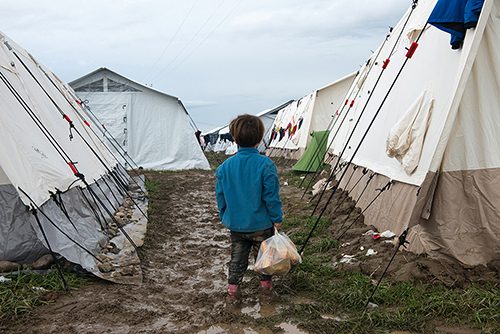
Lost in the Idomeni refugee camp, a young Syrian girl stands in the mud holding a bag of bread for her family. March 10, 2016
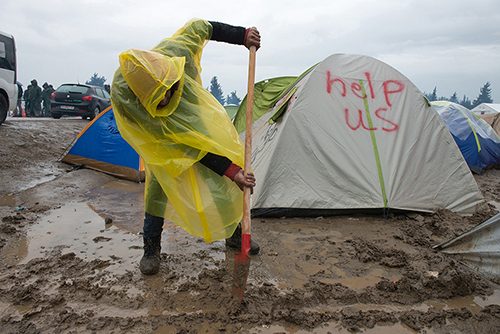
A man digs a gutter to channel rainwater away from his tent. The cold and damp in the camp was causing pneumonia and trench foot in the camp. Idomeni, March 9, 2016
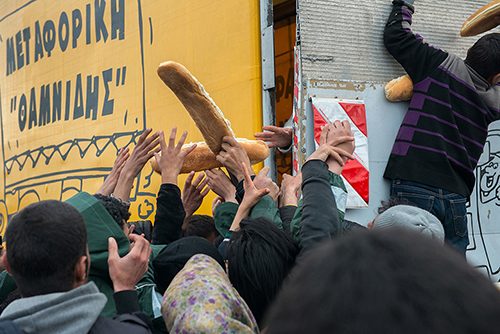
Local Greek charities offer daily respite from the dreary food being given to the residents of the Idomeni camp. Distribution is chaotic as people clamour for fresh bread, eggs, fruit and vegetables. March 10, 2016
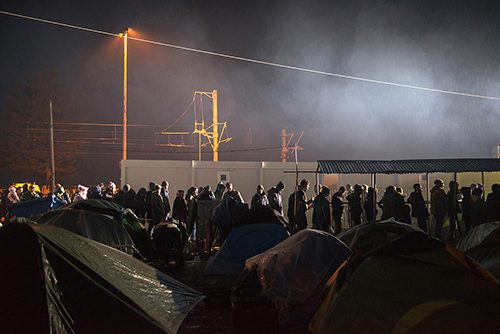
Refugees line up in the rain for food in Idomeni. Three times a day, thousands of people queue up be offered dry submarine sandwiches, biscuits and a boiled egg. Mothers stand in line to get their baby bottles filled with milk. Idomeni, March 23, 2016
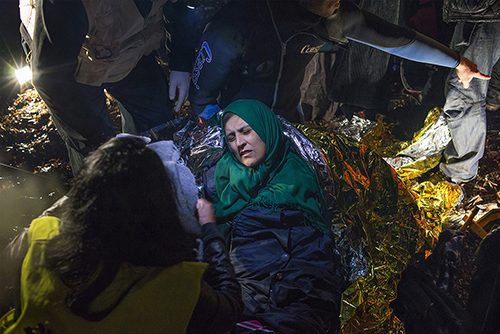
Rescue workers try to warm a Syrian woman suffering from severe hypothermia after a boat landing on Lesbos. Some of the refugees had spent up to six hours on the sea at night, hoping to get by the Turkish coastguard, which would return them to Turkey according to a deal struck with the EU. March 20, 2016

